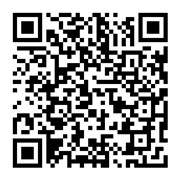分清too much和much too的用法,轻松搞定amount词性转换!
好的,我们来轻松搞定 "too much" 和 "much too" 的用法,特别是它们与 "amount" 这个词的搭配和词性转换。
首先,要分清这两个短语的核心区别:关键在于形容词或副词的位置。
1. "Too much":
这里的 "too" 是副词,意思是 "过于";"much" 是副词,修饰不可数名词或不可数概念,表示 "大量的"。
所以,"too much" 整体作为一个副词短语,用来修饰 动词、形容词 或 其他副词,表示程度过高。
与 "amount" 的关系:当我们要谈论不可数名词的“太多”时,直接使用 "too much + 不可数名词"。
词性转换:这里的 "much" 是副词。如果你想表达同一个意思但侧重名词概念,可以用名词 "amount"。但要注意,直接用名词 "amount" 表达“太多”是不自然的,通常会说 "an excessive amount of + 不可数名词" 或者 "a large amount of + 不可数名词" 来表示“大量的”。而 "too much + 不可数名词" 更侧重于“太多以至于不合适”的程度。例如:"You've eaten too much cake." (你吃了太多的蛋糕。) 这里的 "cake" 是不可数名词。转换思路,虽然不能简单替换成 "too much amount of cake",但可以理解为 "an excessive amount of cake" 是类似的意思,但表达更书面化或强调“过量”而非“过多”。
2. "Much too":
这里的 "much" 是副词,意思是 "非常,太";"too" 是副词,表示 "过于"。
所以,"much too" 整体作为一个副词短语,用来直接修饰 形容词 或 副词,表示程度非常高(即“太...了”)。
与 "amount" 的关系:"amount" 在这里通常是名词。当我们要修饰 "amount" 这个名词本身,表示“这个数量太...了”时,就需要用 "much too"。
词性转换:这里的 "much" 是副词,修饰名词 "amount" 的形容词性。如果你想表达同一个意思,可以用副词 "too" 来修饰形容词 "large"。
例如:"This is much too large an amount of money for the project." (这个项目需要的金额太高了。) 这里 "amount" 是名词,用 "large" 形容它,而 "much too" 修饰 "large",表示程度非常高。转换一下,可以理解为:"This is too large an amount of money for the project." (这里的 "too" 修饰 "large"。) 或者更简洁地说 "This is an excessively large amount of money." 但原句 "much too large an amount" 是完全正确的,并且强调了 "much too" 后面必须跟形容词。
总结一下:
想说“太多”(修饰不可数名词,程度过高),用 "too much + 不可数名词"。这里的 "much" 是副词。转换时,可以说 "an excessive amount of + 不可数名词"。
想说“太...了”(修饰形容词或副词,程度非常高),用 "much too + 形容词/副词"。"much" 是副词。转换时,可以说 "too + 形容词/副词"。
记住这个简单的位置规则和对应的词性转换思路,你就能轻松区分和使用 "too much" 与 "much too" 了!


